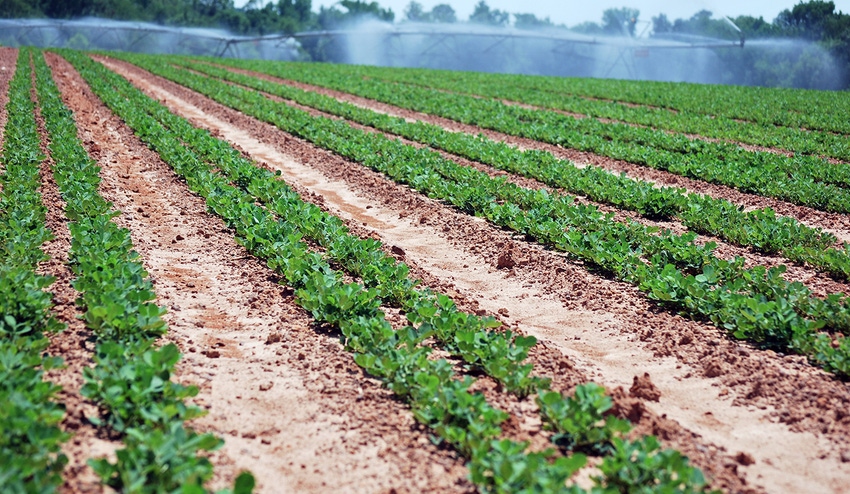May 28, 2020

Peanut growers may face a shortage this year of gypsum, which is critical for pod development. But there are options and alternatives to work around the gypsum supply disruption.
Glen Harris, University of Georgia Extension crop fertility specialist, in a mid-May Extension alert said, "Coal burning power plants that produce a lot of the smokestack gypsum we use on peanuts in Georgia have either switched to natural gas as a cheaper fuel source… or it has something to do with COVID-19. Either way, or both, there has been a disruption in supply."
Growers know the lack of calcium in the peanut pegging zone to be absorbed through the hull can cause pops or no kernels, which reduces yield. Calcium deficiency on peanut can lead to pod rot, too, he said.
He provided alternatives for peanut growers to consider:
USG 500, a mined product, should be available, especially in east Georgia. There may be some old wet bulk or phosphogyp available from Florida and maybe even some recycled wallboard. Freight or trucking cost may be a factor depending on location.
Lime can be used but would need to be applied before planting. Calcium in lime is not as soluble as the calcium in gypsum. Timing is important. If growers deep turn, they'll need to deep turn before applying lime to avoid burying it. The calcium needs to be in the pegging zone, or top four inches. Lime should only be used when a field needs a pH adjustment (below 6.0) or start around 6.0 so the lime will not raise the soil pH too high.
A product currently available called Topflow has been field tested at a 10-gallon-per-acre rate, surface applied at planting. It may not provide as much calcium to the pegging zone as 1,000 pound per acre of gypsum and won’t raise the soil test calcium as much but can be considered an alternative if a grower cannot get gypsum. Even though it is a liquid, it is still lime so it needs to be applied before or at planting.
Growers need to remember gypsum should be applied at early bloom, or 30 days to 45 days after planting. Peak pod fill is around 60 days to 90 days after planting. A grower can still see benefit from a gypsum application made any time before 60 days after planting. It can also depend on water or irrigation. Water dissolves calcium, which gets it through the hull into the developing kernels, he said.
Growers can put calcium out through a center pivot, he said. Recent research shows 10 gallons per acre of calcium chloride, or 20 gallons of calcium thiosulfate, through the pivot during peak pod fill, or around 75 days after planting, can have some benefit.
"Again, this is not as good as a timely gypsum application but can be viewed as an emergency or insurance application. The calcium in both products is basically 100% soluble, and therefore can be applied during peak pod fill. Calcium chloride should be the more affordable option but check on price and availability," he said.
Not all fields, he said, will need a gypsum application. But which fields need gypsum?
Peanut being saved for seed should automatically receive 1,000 pound per acre of gypsum, regardless of soil test calcium levels. Calcium is extremely important for germination of peanut seeds, he said.
Technically other fields should be “pegging zone” tested, for example a soil sample four inches deep taken soon after peanuts emerge. If the soil test calcium (Mehlich 1 Extractant) is 500 or higher and the calcium to potassium ratio is 3:1 or higher – then the soil test calcium will be considered adequate and no gypsum will be recommended. This is based on research field trials looking at yield and grade, he said.
Research shows gypsum is more important in dryland compared to under irrigation since water will be more limiting in dryland and less soil test calcium will be available.
About the Author(s)
You May Also Like






